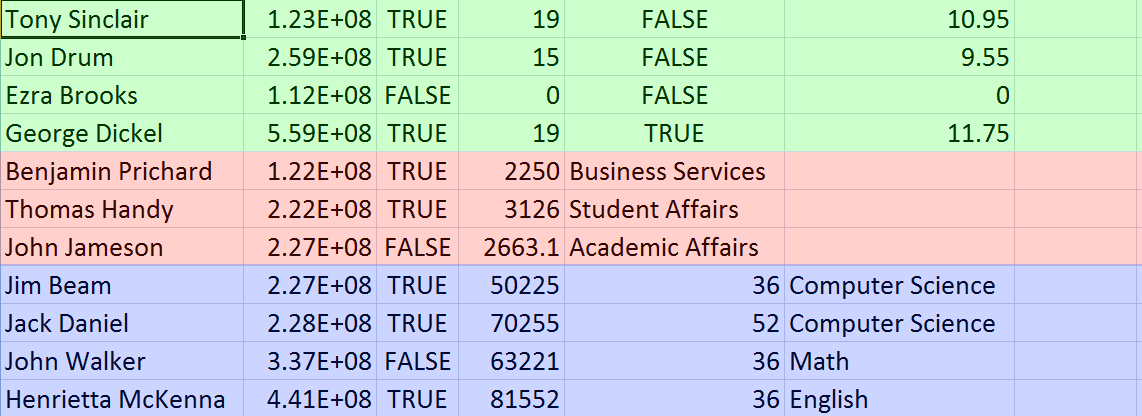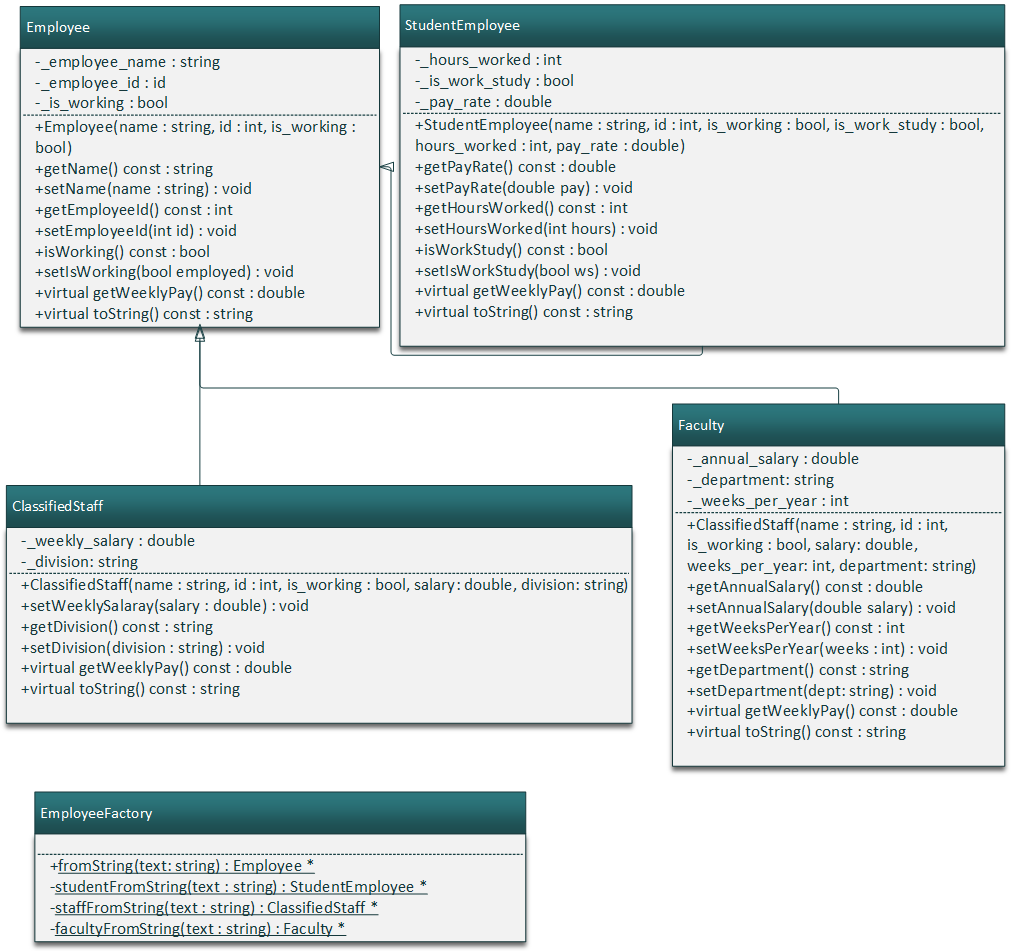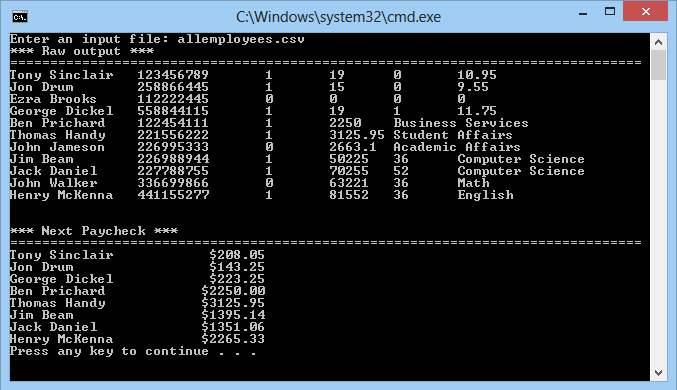Reference no: EM131283
Objective
In this assignment, you read a list of employees from a CSV file and convert them into corresponding objects. Note that, unlike Lab 4, the CSV file contains more than one type of Employee. In addition to a StudentEmployee, we also have ClassifiedStaff and Faculty that extend our base Employee. Each employee has different information (described more in the UML diagram). Let's take a look at the CSV as it appears in Excel (note: color added to distinguish between Employee types):

In green, we have StudentEmployees. In red are examples of ClassifiedStaff. Finally, the blue contains Faculty. Note the subtle differences between each Employee type. ClassifiedStaff have one less column. StudentEmployee's last column contains a double whereas Faculty's last column contains a string. You will need to use these differences when converting from CSV into the appropriate object-type.
Obtaining the Correct Object-type
Speaking of converting into the correct object-type, this assignment also introduces you to the classic design pattern known as the Factory. The goal of the factory is to abstract away object creation. Doing so allows us to create more generic code that can be used in a wider variety of circumstances. In our situation, our factory will accept a line from the CSV, convert that line into a pointer of the appropriate class (StudentEmployee, ClassifiedStaff, or Faculty), and return that instance of that class back to the main function.
UML Diagram

Here's a complete UML diagram of all the classes that you'll need to create:
Employee and its Derivatives
Most of the Employee and its derivative class' methods should be self-explanatory as they're mostly just basic getters and setters. However, I will comment on the class constructors and the two virtual function.
Class Constructors
In order to promote code reuse, derivatives of Employee should call Employee's base constructor. We've talked about how to do this in class, but here's a basic example:
StudentEmployee( <paramters here>)
: Employee( <pass parameters to employee> )
{
//initialize variables specific to StudentEmployee here.
}
The getWeeklyPay Method
the getWeeklyPay() method is calculated differently based on the derived class:
? For StudentEmployees, you get the weekly pay by multiplying their hours worked by their hourly wage
? For ClassifiedStaff, simply return the weekly salary
? For Faculty, return their yearly wage divided by the number of weeks that they work
The toString Method
Like reusing the base class' constructor, you should also aim to reuse the base class' toString() method. To do so, simply call Employee::toString() in your overridden method. The format for each toString() is shown in the sample output section.
Sample Output
Below is sample output from my program:

Note that only people presently working are displayed in the "Next Paycheck" area. In my case, Ezra Brooks isn't working so he isn't displayed in the paycheck section.
Header Comment, and Formatting
1. Be sure to modify the file header comment at the top of your script to indicate your name, student ID, completion time, and the names of any individuals that you collaborated with on the assignment.
2. Remember to follow the basic coding style guide. A basic list of rules can be found on OSBLE.